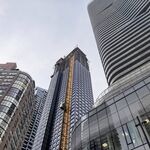W. K. Lis
Superstar
One thing to note is the filling in of ponds and ravines in the early periods of Toronto. We now have houses that are in actuality sitting on top of ponds, resulting in damp basements or require the use of sump pumps to keep them dry.
When they fill in the ravines back then, it results in lack of parks. Today, in most cases, we leave the ravines in their natural state, getting parks in return. The negative is the sprawling that happens with farm fields being turned over for development is now greater than it used to be.
When they fill in the ravines back then, it results in lack of parks. Today, in most cases, we leave the ravines in their natural state, getting parks in return. The negative is the sprawling that happens with farm fields being turned over for development is now greater than it used to be.




